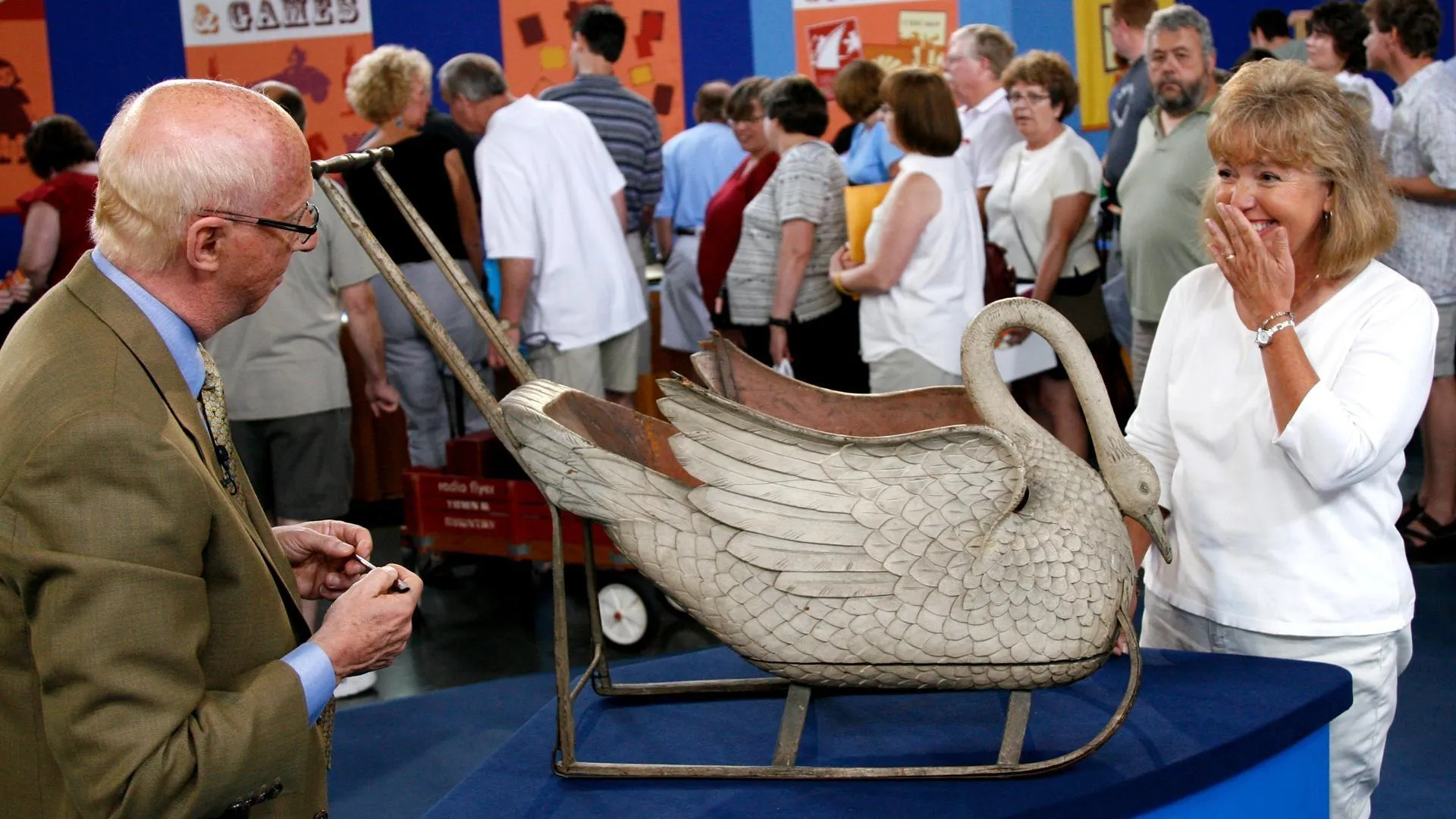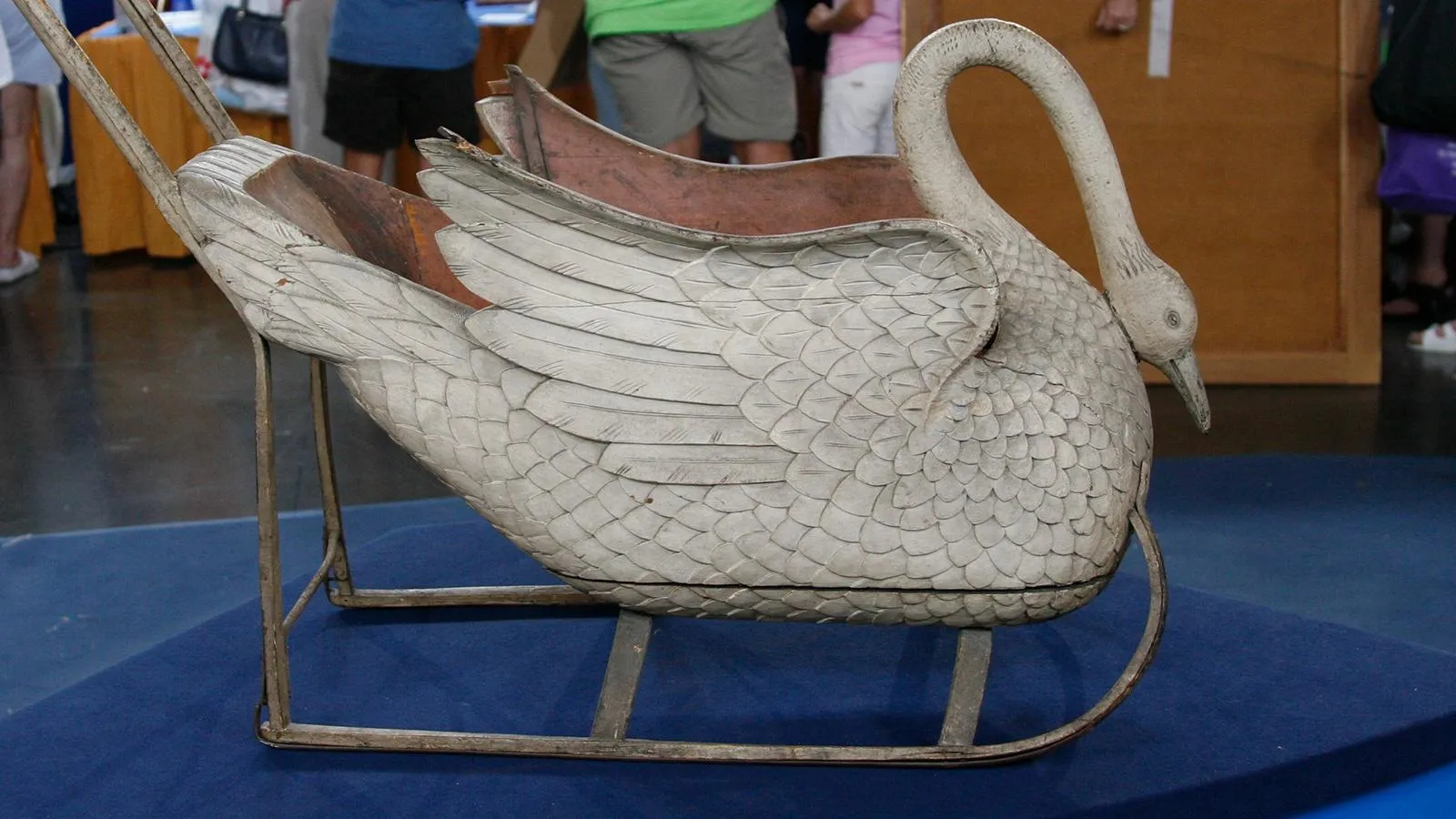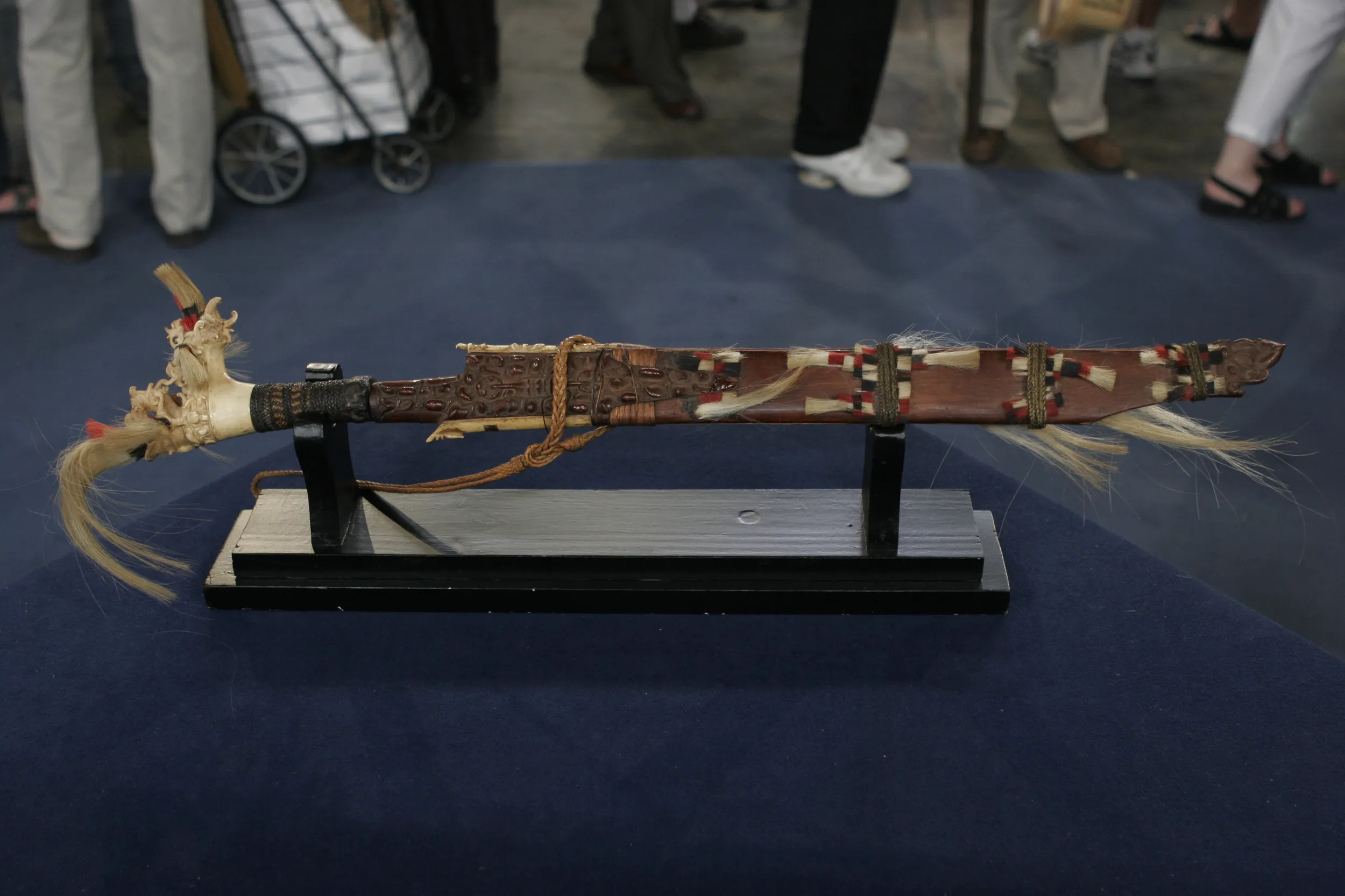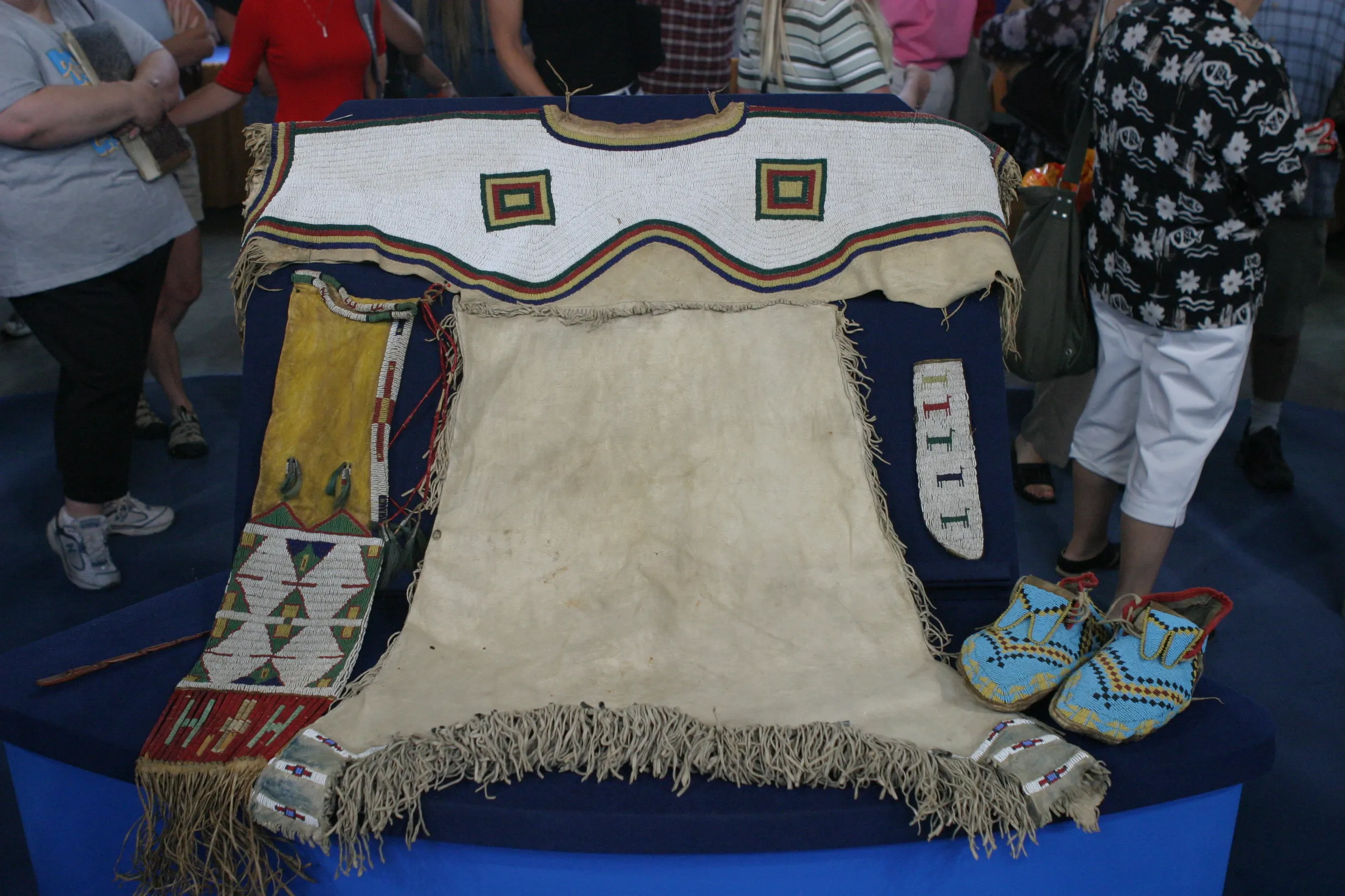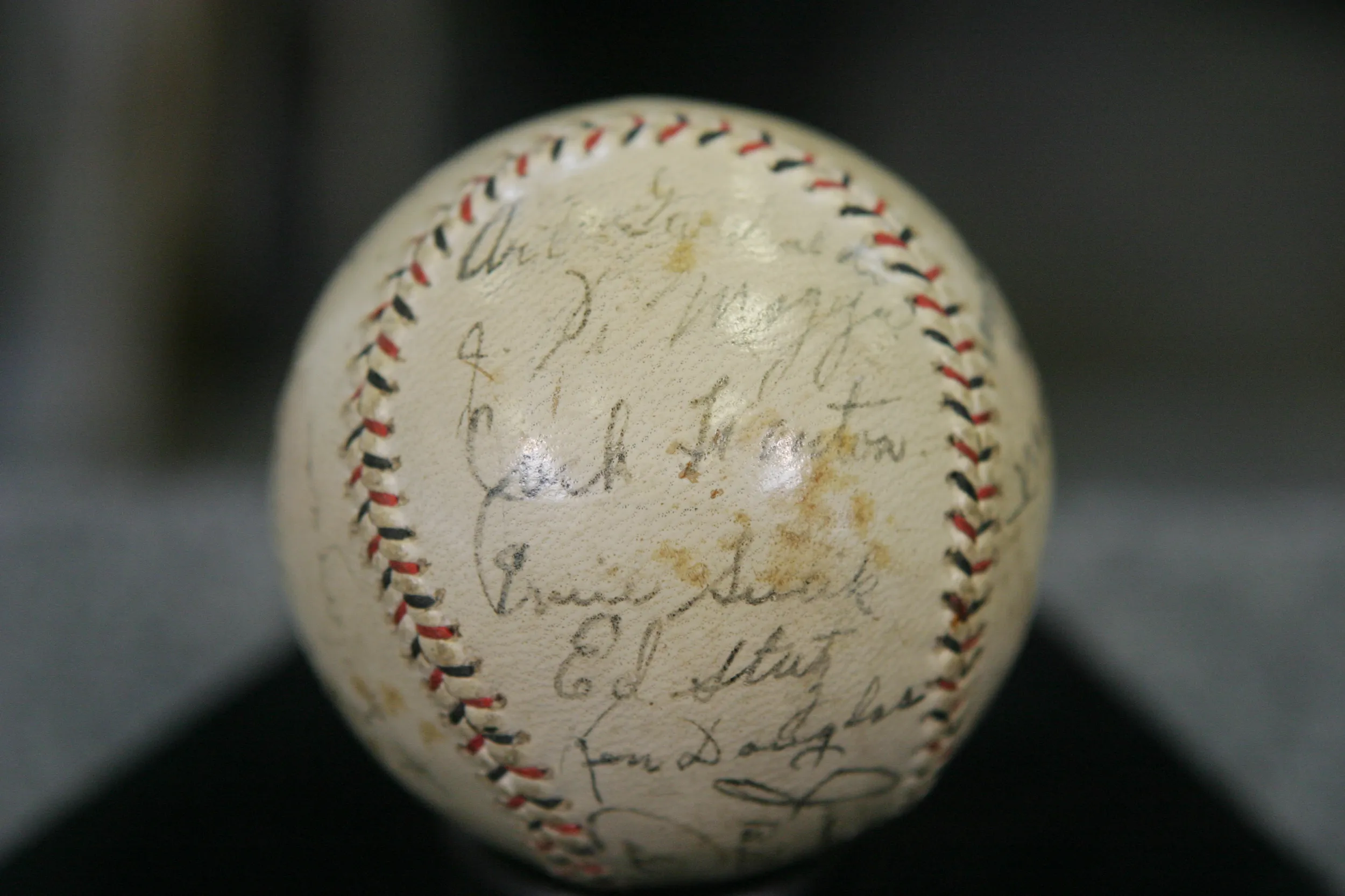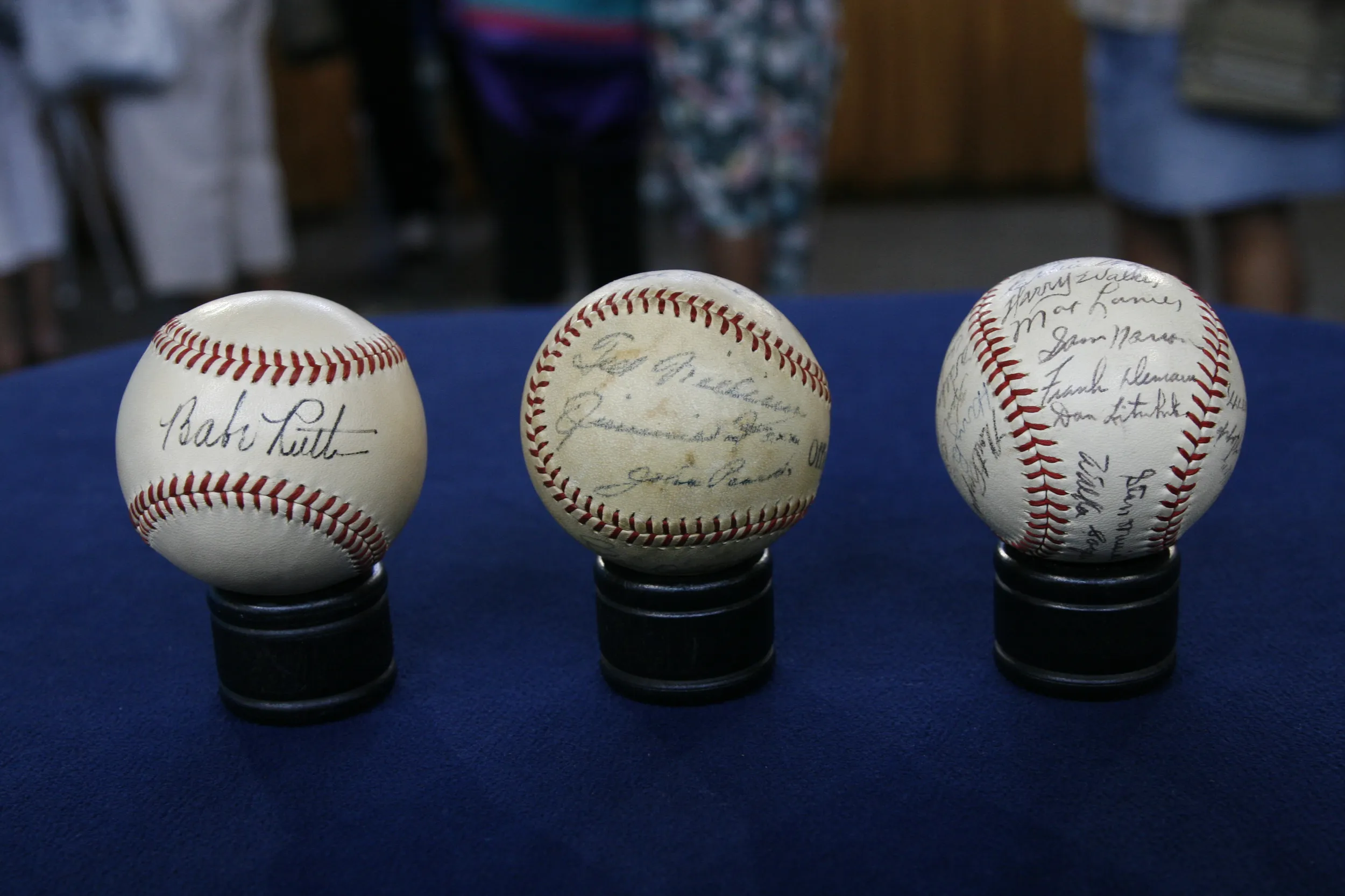GUEST: I was a pretty young guy, probably about 15 or 16 years old, and I was up at an antiques store in northern Wisconsin. I was with my, my mother. We had went up there on vacation. And I said, "Gee, I'd sure like to have that spoon, or the ladle." And she says, "Well, if you want it, I'll buy it for you. Your birthday is coming up, I'll buy it for you." 1957. I've had it all these years. I think it's made out of a buffalo horn, but I'm not exactly sure, because some of the books I've been looking in, the Northwest coast had spoons similar to that that were made out of a mountain sheep horn.
APPRAISER: It's mountain sheep.
GUEST: Is it mountain sheep? Oh, good.
APPPRAISER: Yeah. You can tell when you turn it over. You can see how it's got these ridges that go around it, and that's the ridges of the horn where they polished it off. And it's from Canada. It's Athabascan. And it's for serving. How did you get the doll?
GUEST: A fella had a tavern, and I read a little article that he was selling. He was 85 years old and he was selling out what little stuff he had. But he said that he had got it from a fella that had found it in a dump, believe it or not.
APPRAISER (laughing): In the dump.
GUEST: In a dump.
APPRAISER: Judging from the way it's made and the looks of it, it's probably a hundred years old or more.
GUEST: Okay.
APPRAISER: It's hard to tell, because things change so little. They were made to sell, but also, the children played with them in the tribe. The embroidery is gorgeous, and what that is, it's seal gut that's been dyed and used to embroider the pieces. And I can take this boot off, and you can see how it's all carved wood and it's been pinned together. And it's really kind of cool, because this is articulated. You can move the legs and the arms, and it's got carved wood hands, and they're pinned, also. And the boot is just incredibly made. I mean, there are collectors who would go just for the boots. Um...
GUEST: Is that right?
APPRAISER: But don't see very many of the figures. How much did you pay for the doll?
GUEST: I think I paid around $25 for the doll. It sounded like a good deal to me at the time.
APPRAISER: And you paid $15 for this?
GUEST: Nine dollars. Back in the '50s, you know, money didn't grow on trees, and that was a good sum of money, but that was my birthday gift.
APPRAISER: It's a pretty good birthday gift. And it's great that you still have it. I don't have any of mine. This spoon is not very decorated, but even so, it's an early one. It's well over a hundred years old.
GUEST: Okay.
APPRAISER: 150 years old, at least. It could even be older than that. It shows a lot of wear. And it was not made to sell, it was made for use by the tribe. Easily $800 to $1,000.
GUEST (chuckling): Wow, well, that's good to hear. I'm happy to hear that. $800 to a thou, wow.
APPRAISER: On the doll, they're rare. They don't show up this early very often.
GUEST: Really?
APPRAISER: I had somebody at the table look up all the records on sales for the past five years or so. There was one, $2,000 to $3,000.
GUEST: Oh, my... Wow.
APPRAISER: So, pretty good buy.
GUEST: That's incredible.

